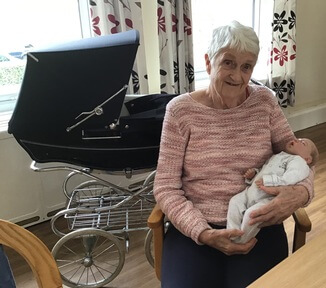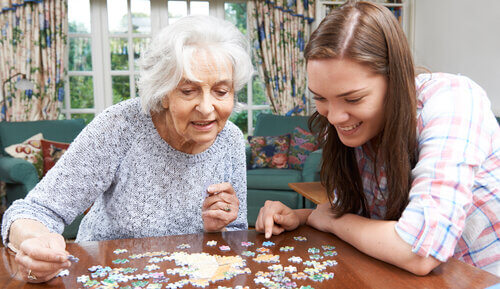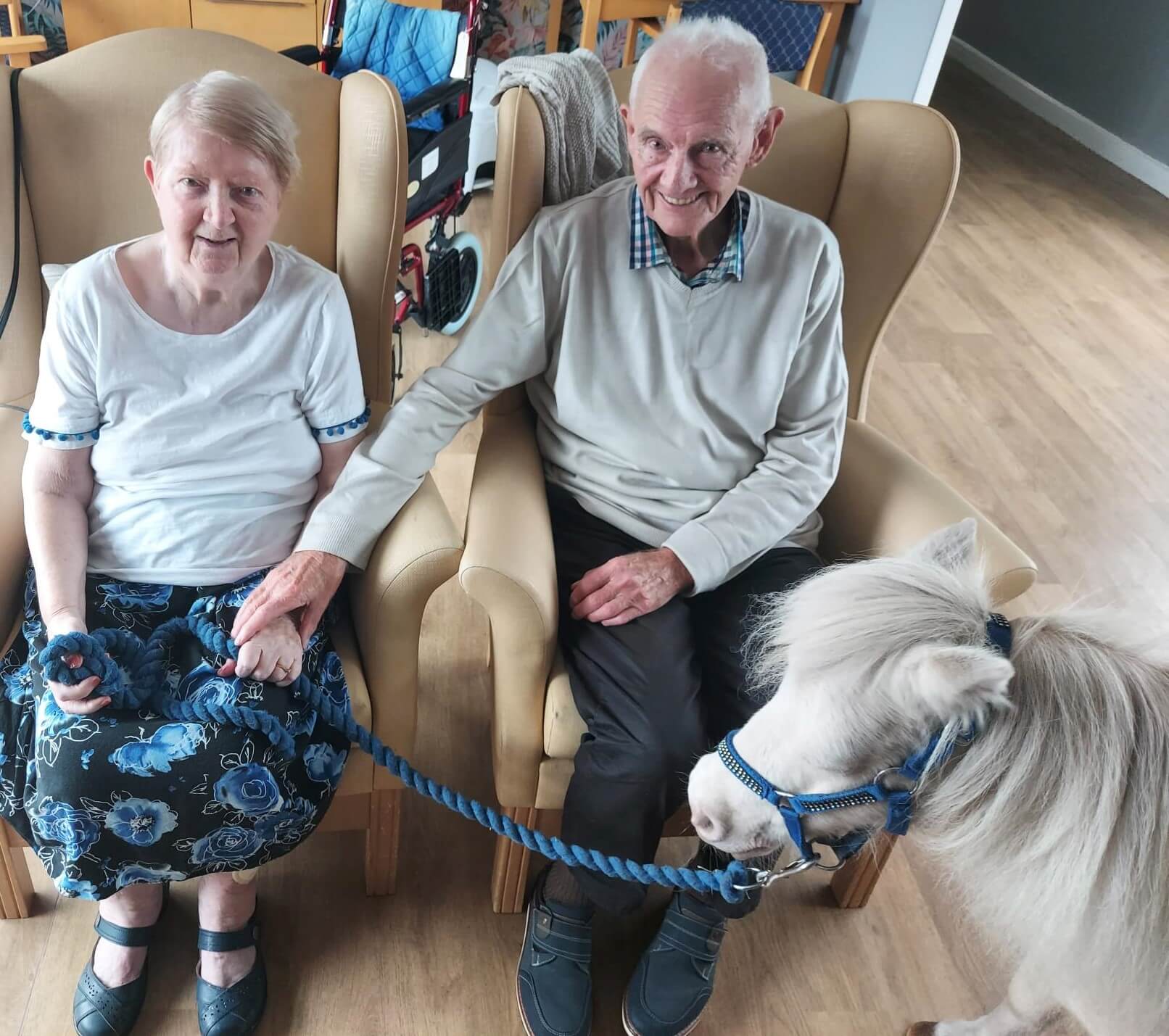
Page contents
Non-medical therapies
Nearly three-quarters of care home residents have dementia or severe memory problems, according to the Alzheimer’s Society, and with dementia on the increase, this number looks set to grow. Many residents take some form of medication to help reduce some of the symptoms of the disease as currently there is no cure for dementia.
However there are non-pharmacological therapies used in care homes that can also alleviate some dementia symptoms.
These alternative dementia therapies which include doll therapy, animal therapy and reminiscence therapy are becoming increasingly popular, as care homes find they help people to live well with dementia.
Non-medical therapies have been shown to be hugely beneficial in reducing distress and anxiety, enhancing quality of life as well as improving cognitive functioning and mood.
They also have the advantage in that there are not really any side effects like there can be with medication. However it is important they are person-centred and do not dehumanise or patronise the person living with dementia.
Below are some alternative dementia therapies increasingly being used in care homes. If you are searching for a care home that uses alternative therapies for people with dementia, it may be useful to read about the benefits of these therapies so you can ask if they use them in the care home you are considering.
1. Music therapy
The power of music can be used to improve people’s mood and behaviour as well as stimulating the brain and reducing anxiety. Music can also evoke memories and emotions.
Many care homes use singing and music sessions to help people with dementia connect and unlock memories.
Cellist Claire Garabedian, who has studied the effects of live and recorded music on people with dementia at the University of Stirling, says: “Even when someone can no longer talk, music becomes an avenue for communication and engagement. It seems to access parts of the brain that remain unaffected by the ravages of dementia.”
2. Reminiscence therapy
Reminiscence therapy works by encouraging people to talk about events and experiences that have happened in their past. Memories can be evoked by using props such as video footage, music, photos and objects.
Triggering memories from the past can improve someone’s engagement with another person and can animate them. It can also improve their wellbeing as they remember good times. In addition it can stimulate the brain and boost their cognitive functioning.
Life story work involves collating someone’s memories into a digital or physical book. This also exercises the brain and memory and boosts someone’s self esteem as talking about their life experiences to someone will make them feel valued.
3. Animal therapy
Animals can have a very positive effect on people as activities such as petting or stroking an animal helps exercise movement and coordination and has a calming effect.
Interaction with animals can reduce anxiety in people with dementia and boost mood and communication. They can also trigger reminiscence in people who had pets before they entered the care home.
A care home in Oxfordshire that specialises in dementia care recently transformed into a farm for the day as part of its wellness programme.
Rosebank Care Home was joined by Ark Farm and played host to dogs, donkeys, sheep, goats, ducks, chickens and rabbits.
Tammie, a lifestyle coordinator at Rosebank Care Home said: “It was lovely. Everyone felt included in the activities and it was just so relaxing. I think people forget how calming the presence of animals can be, there wasn’t a single resident that didn’t benefit from it.”
4. Doll therapy
Doll therapy is where people with dementia are given a lifelike doll to care for and cuddle.
Some care homes find giving people living with dementia a doll to hold can be very comforting and can calm them if they are agitated.
However it may be upsetting for family members to see their grandma or mum cuddling a doll as it can appear demeaning. So care homes should discuss the use of doll therapy with families of residents and explain their reasons for using it.

Care home staff do say it is important to closely monitor residents’ interactions with the dolls as some can get too attached to the dolls and put them to sleep in their beds while the resident sleeps in the chair, which can detrimental to the resident’s health.
Therapists recommend using dolls that are as lifelike as possible.
A care home in Gravesend run by Rapport Housing and Care was given a reborn doll as well as a classic Silver Cross pram so the residents can push the doll around the home.
Melanie Martin, deputy manager, is full of praise for doll therapy, saying: “The effect the baby has on the residents is heartwarming and emotional, it brings them joy like nothing I have seen before. When the baby is around the whole mood changes, they speak quietly as not to wake her and they are so gentle with her, it’s beautiful to see.”
5. Staff wearing pyjamas so dementia residents know it’s bed time
People with dementia can lose track of time and this can affect their sleep patterns and causes problems with their body clock.
To let people with dementia know it is time for bed, some care home staff put on nightwear such as pyjamas and dressing gowns so they realise it is night time.
carehome.co.uk carried out a survey recently which found one in 10 care workers wear pyjamas for this very reason.
The initiative helps promote sleep at night and reduces pacing and disorientation as well as reducing night-time falls with less residents being awake at night.
The Old Vicarage care home in Cumbria is one of those that introduced the wearing of pyjamas for staff around five years ago. It has now changed this policy to wearing dressing gowns as staff find it more tricky wearing pyjamas when doing tasks such as cleaning.
Owner Kamal Siddiqi said: “We have found staff wearing dressing gowns to be very helpful in encouraging confused residents who wake during the night that it is night time not day time, sometimes they will sit with night staff and have a cup of tea before returning to their beds.”
Staff at Simonsfield Care Home in Runcorn wear pyjama-style scrubs when they are on night-time shifts. Manager Debbie Smith, said the initiative was introduced and the care home saw such a “drastic improvement in their sleep patterns” it was made permanent.
She said: “It is remarkable how a simple change in uniform can have such drastic impact on the lives of those living with dementia.”
6. Intergenerational care
Intergenerational care is when younger and older generations spend time doing meaningful activities together in a care setting.
Children can have a very beneficial effect on people living with dementia. The engagement levels of someone with dementia can dramatically change when a child walks in the room and they can be far more animated and communicative.
This is why some care homes run intergenerational programmes where they partner with a nursery or a primary school.
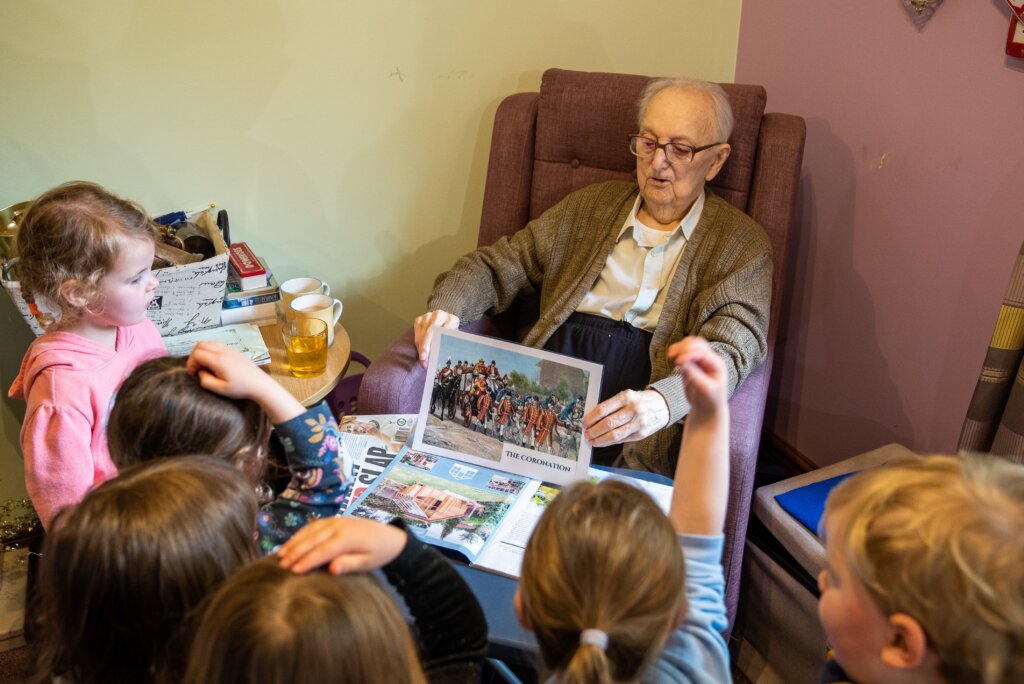
Wren Hall is a dementia nursing home in Nottinghamshire which offers intergenerational care. It joined forces with Little Wrens Day Nursery this year and opened an intergenerational space.
Its managing director, Anita Astle says: “Intergenerational care breaks down stereotypes and promotes empathy and understanding between generations.
“It is a beautiful way to create meaningful connections and enhance the quality of life for everyone involved.”
A nursery worker who took a group of two-year olds into Wren Hall Nursing Home, reveals how the face of one of the women living in the care home ‘lit up’ at the sight of the children.
“The lady had the biggest grin on her face and said: ‘It makes my day when the children come,” said the nursery worker.
7. Robotic pet therapy
Some care homes do have their own resident pets but for care homes specialising in dementia care, this may not be an option.
This is why a number of care homes use robotic dogs and cats for their residents as they respond to touch by purring or barking and wagging their tails.
A study by Plymouth University of eight care homes in Cornwall found robotic pets calmed residents with moderate and severe dementia and reduced their anxiety as well as boosting mood and reducing agitation and providing reassurance.
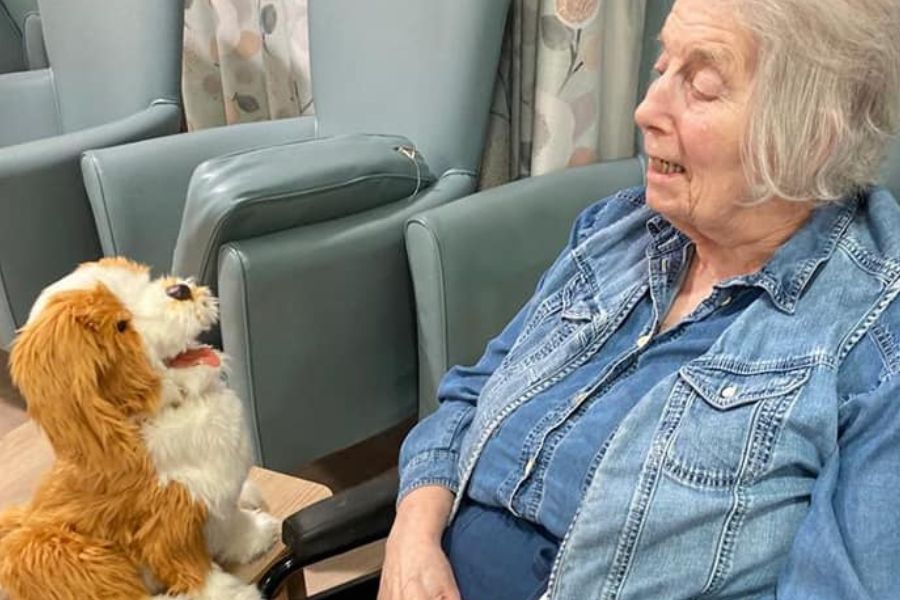
Beverley Barnes, who manages compliance and quality assurance at Hillcrest House Nursing Home said: “At Hillcrest house the evidence showed that the use of these two robotic pets with our residents living on the dementia unit was very invaluable.
“We had one particular resident who had previously had a pet Labrador before coming into the home and as a result she was drawn to the robotic dog thinking it was her pet. This had a great calming effect on her moods and behaviour and she became a different, happier person as a result.”
Find your ideal care home
- Explore a wide range of care options and facilities
- Read independent ratings and reviews
- Connect directly with care homes to book a tour and discuss your needs
